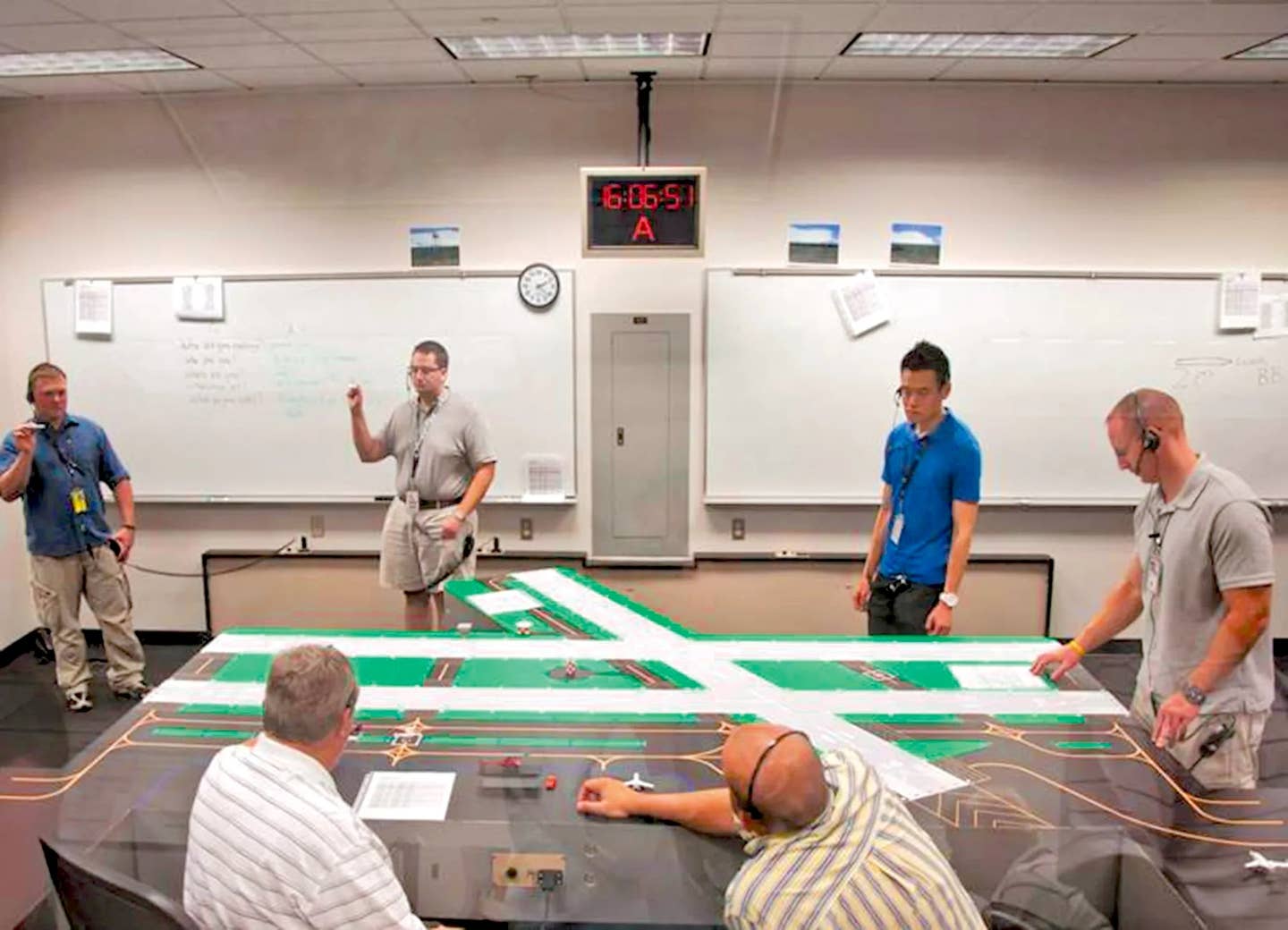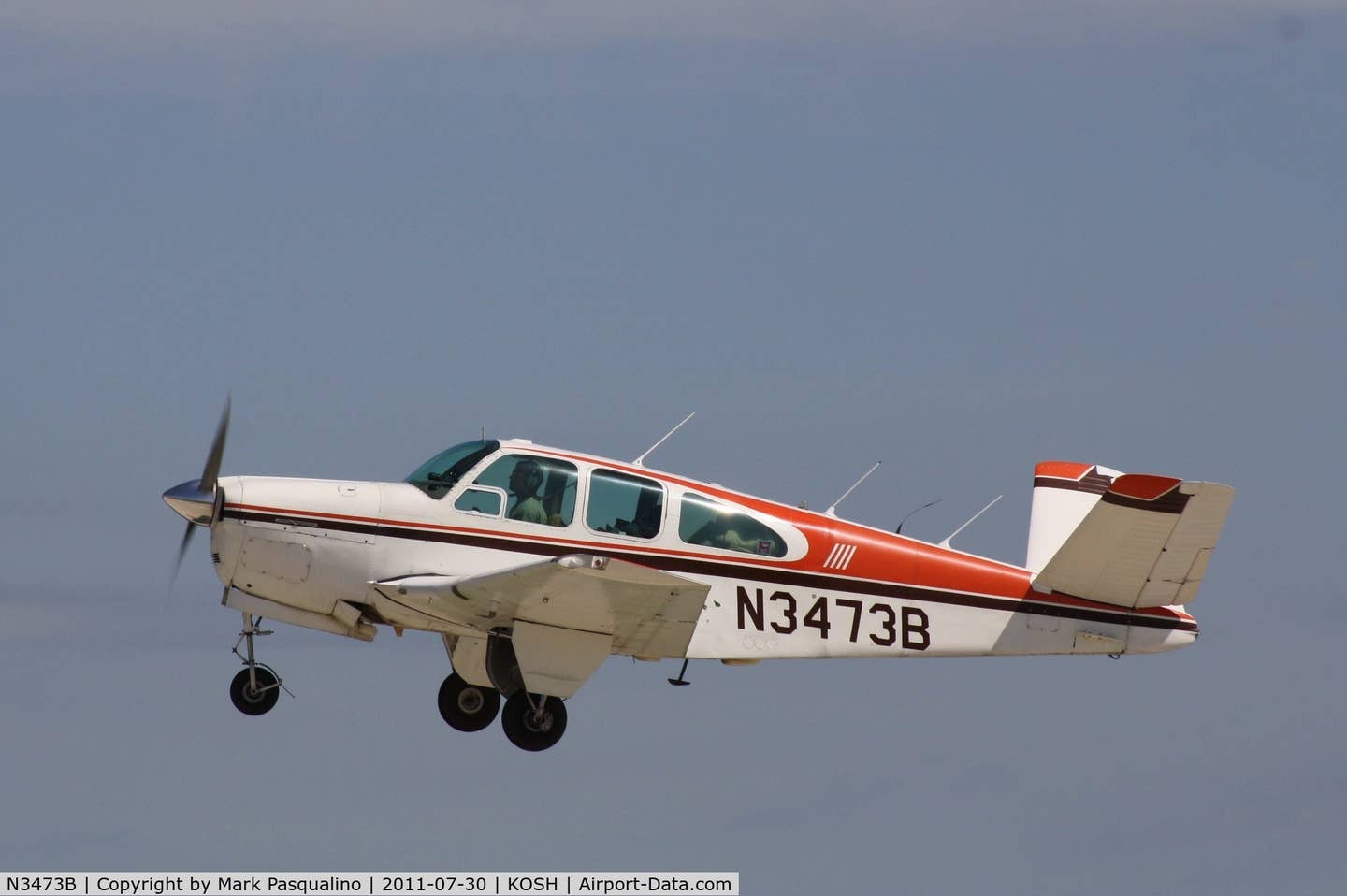Eye of Experience #52:The Smartass – A Lesson in Inevitability
What happens when a student pilot scores 80 percent on the hazardous attitudes evaluation? AVweb’s Howard Fried has seen them come and go and, according to Howard, the result is inevitable.
 Several months ago I wrote a column entitled Some People (Just don't Belong in the Air). At that time, because of lack of space I did not include what is perhaps the most blatant example of an individual who had no business even approaching within 50 feet of an airplane, let alone attempting to operate one.
Several months ago I wrote a column entitled Some People (Just don't Belong in the Air). At that time, because of lack of space I did not include what is perhaps the most blatant example of an individual who had no business even approaching within 50 feet of an airplane, let alone attempting to operate one.
For many years I taught a primary ground school in the adult education division of the local public schools. This course was offered for high school credit for those who wanted or needed credit. It was a great means of recruiting flight students for my flight school, and was extremely successful. It was offered twice a year in conjunction with the regular school semester schedule and we enrolled an average of seven flight students each semester. In the ground school we averaged 55 students each semester, only two or three of whom were taking the course for credit.
Father and Son
 One spring semester a father and son enrolled together in the ground school class. The father, we'll call him Bill Smith, was a veteran of World War II, a glider pilot in the war, and he held a Commercial Pilot Certificate (Glider) with Private privileges for Airplanes - Single Engine Land, although he hadn't flown for several years. His wife had died during childbirth and he alone had raised the boy, whom we will call Tom Smith. Tom, at age 17, had grown up as the apple of his father's eye. Both father and son enrolled in my flight school, the father to acquire currency and the son to work toward a private pilot certificate. Since I had established a rapport with the father I undertook their training myself rather than assigning them to other instructors. I scheduled them at the same time so that they could come to the airport together and one would wait while the other got his lesson. They scheduled both weekend days, and after about three sessions I soloed the father in the pattern. Meanwhile the son displayed an excellent aptitude for manipulating the airplane but a deplorable attitude.
One spring semester a father and son enrolled together in the ground school class. The father, we'll call him Bill Smith, was a veteran of World War II, a glider pilot in the war, and he held a Commercial Pilot Certificate (Glider) with Private privileges for Airplanes - Single Engine Land, although he hadn't flown for several years. His wife had died during childbirth and he alone had raised the boy, whom we will call Tom Smith. Tom, at age 17, had grown up as the apple of his father's eye. Both father and son enrolled in my flight school, the father to acquire currency and the son to work toward a private pilot certificate. Since I had established a rapport with the father I undertook their training myself rather than assigning them to other instructors. I scheduled them at the same time so that they could come to the airport together and one would wait while the other got his lesson. They scheduled both weekend days, and after about three sessions I soloed the father in the pattern. Meanwhile the son displayed an excellent aptitude for manipulating the airplane but a deplorable attitude.
Tom kept telling the ATPs and other certificated pilots around the airport how to fly, and me how to teach. On the day I sent Bill out alone to do a few landings in the pattern, Tom and I sat on the grass watching him. When Bill made his final landing and parked the airplane, he came walking over to where we were waiting. Tom jumped up and literally snarled at his father, "Your first one floated too long, your next one dropped in from a couple of feet, and your third was sloppy too!" So help me, if he had been my kid I'd have flattened him on the spot for that kind of disrespect (disregarding the fact that he was wrong - there was nothing wrong with Bill's landings). Bill just stood there and took it in stride.
After Tom's session that day, he informed me that he wanted to transfer to a flight school at another nearby airport where they used Grumman-American AA1's because they resembled little fighter planes instead of the stodgy high-wing trainers we were using. They both dropped out of the ground school. Although I was quite fond of Bill, I was happy to see Tom go. This kind of student I didn't need. I called my friend who ran the school to which Tom was transferring and warned him to look out for this guy.
The Saga Continues
 About a year later Bill showed up and asked me if I would personally undertake the completion of Tom's training. I asked what was wrong with the school where he had been training in the Yankee, and he informed me that Bob (the operator of that facility) had terminated Tom's training and run him off. "Why?" I asked. It seems that one night (without a night check-out and as a student pilot) Tom had taken a friend for an airplane ride! His excuse was that he had been working on a trade deal with Bob, grunt labor in exchange for flight lessons, and this friend had helped him wash an airplane. So he felt that he owed him a ride - and to hell with the regulations that prohibit students from carrying passengers. Being fed up with this cavalier attitude toward authority and Tom's smartassery in general, Bob had run him off.
About a year later Bill showed up and asked me if I would personally undertake the completion of Tom's training. I asked what was wrong with the school where he had been training in the Yankee, and he informed me that Bob (the operator of that facility) had terminated Tom's training and run him off. "Why?" I asked. It seems that one night (without a night check-out and as a student pilot) Tom had taken a friend for an airplane ride! His excuse was that he had been working on a trade deal with Bob, grunt labor in exchange for flight lessons, and this friend had helped him wash an airplane. So he felt that he owed him a ride - and to hell with the regulations that prohibit students from carrying passengers. Being fed up with this cavalier attitude toward authority and Tom's smartassery in general, Bob had run him off.
Tom Comes Back
Because of my respect for his father I reluctantly agreed to complete Toms training, warning Tom that if he stepped so much as an inch out of line I would squish him like a bug! Well, after two or three sessions I gave up. The kid kept repeatedly trying to direct the course of his training, displaying a know-it-all attitude. He was often wrong but never in doubt. Bill was extremely disappointed, but I felt that there was nothing further I could do for the boy.
A Predictable End
It was two years later that I again heard from or about Tom Smith. It seemed that he had joined a flying club at a local university and finally become a private pilot. He took one of the club airplanes, and with a friend as a passenger had flown to Put-in-Bay, an airport on South Bass Island in the middle of Lake Erie. On takeoff, way over gross, they stalled and went into the lake. The passenger evacuated the aircraft and swam to safety, but Tom perished. He was trapped in the airplane and drowned in Lake Erie. Of the five Hazardous Attitudes defined by the FAA that lead pilots to disaster, Tom Smith exhibited four - he suffered from invulnerability, anti-authority, impulsivity, and macho, lacking only the resignation attitude. I have not seen all these dangerous attitudes wrapped up in one person before or since.
Tom Smith demonstrated his feeling of invulnerability and impulsivity by his bold actions, his anti-authority attitude by his disregard for the regulations and his inability to take instruction, and his machismo by his interpersonal relationships. Those who knew him could predict with absolute certainty the final outcome of his aviation career.
Another Case in Point
 A man in his 50s (we'll call him Ed Jones), a graduate engineer, trained at my school and I certified him for his private certificate. He then bought a nice Cessna 182. A couple of years later, after training elsewhere for an instrument rating, he came to me for his instrument rating checkride, bringing his airplane for the flight test. The engine was several hundreds of hours past the recommended TBO (Time Between Overhaul). I had to turn him down for that rating because he failed several of the tasks set forth in the PTS (Practical Test Standards). His instructor was very unhappy with the fact that I had busted his applicant and sent him to another examiner for the recheck, which he again busted. On the third try, with still another examiner, he finally passed.
A man in his 50s (we'll call him Ed Jones), a graduate engineer, trained at my school and I certified him for his private certificate. He then bought a nice Cessna 182. A couple of years later, after training elsewhere for an instrument rating, he came to me for his instrument rating checkride, bringing his airplane for the flight test. The engine was several hundreds of hours past the recommended TBO (Time Between Overhaul). I had to turn him down for that rating because he failed several of the tasks set forth in the PTS (Practical Test Standards). His instructor was very unhappy with the fact that I had busted his applicant and sent him to another examiner for the recheck, which he again busted. On the third try, with still another examiner, he finally passed.
His work was in southeastern lower Michigan, and his family summered at their resort home in Wisconsin. You guessed it. Every weekend he commuted from Michigan to Wisconsin to spend the weekend with his family. He flew his airplane with the tired engine right smack dab across the widest part of Lake Michigan, the bottom of which is paved with dead airplanes. At that point he had to fly over 80 nautical miles of open water. Knowing that he was invulnerable and being overconfident in his own skill, Ed disdained survival gear of any kind. All his friends warned him of what might happen, but he disregarded their advice. Since there was no way he could get enough altitude to glide to shore in that airplane, we all urged him to go around the lake, or at least cross at a narrower point. He was also strongly urged to carry survival gear - at least a life jacket, if not an inflatable raft.
We'll never know the cause of the fatal accident; all that turned up in the middle of Lake Michigan was a few pieces of the airplane (enough to identify it). Weather and his lack of skill on the gages may have been the cause, or the tired old engine may have just given up.
This one, too, was entirely predictable, and it resulted from the invulnerability factor.
Last Case
 I've previously written about the man I called Henry, a man in his 50s who came to my flight school stating that he was a World War II fighter pilot (an ace, with the records to prove it). Based on his military experience he had a commercial pilot certificate, which he had received 30-odd years previously, the privileges of which he had never exercised. In other words he hadn't flown for 30 years. He announced that he wanted an instrument rating, and that it shouldn't take more than a few hours. Boy! Was he ever wrong. After 20 hours of ground and flight with the very best instructor I've ever known, his feet were still firmly planted on square one. The nice man just didn't have it any more.
I've previously written about the man I called Henry, a man in his 50s who came to my flight school stating that he was a World War II fighter pilot (an ace, with the records to prove it). Based on his military experience he had a commercial pilot certificate, which he had received 30-odd years previously, the privileges of which he had never exercised. In other words he hadn't flown for 30 years. He announced that he wanted an instrument rating, and that it shouldn't take more than a few hours. Boy! Was he ever wrong. After 20 hours of ground and flight with the very best instructor I've ever known, his feet were still firmly planted on square one. The nice man just didn't have it any more.
Because of his total lack of progress, I advised him to give up, advice which he disregarded. With grim determination he enrolled at another flight school, where, after 60-70 hours with their best instructor, he took and failed the practical test for the instrument rating. On the fourth try he finally passed. Not long after, on an attempt to take off into IMC (Instrument Meteorological Conditions) in an airplane with a carbureted engine, he pulled the mixture control instead of the carb heat knob. He crashed and died, taking another individual with him. Almost everyone who knew him could see it coming.
The Cure
As is the case with many such know-it-alls, this was an eminently predictable end to a sad tale. The only way I know for such an end to be prevented is if the individual scares him/herself very badly to the extent that it causes an attitude change. This is the only cure I know of for this condition from which some people suffer. An example of this is the case of another smartass who persistently scud run in marginal weather. One day, coming in to his home field, he had to duck under the wires crossing the road just before the runway. This scared the poor guy so badly that he went right out and acquired an instrument rating and became a cautious pilot. He might be said to have learned his lesson.
Unfortunately, seeing others survive a miraculously narrow brush with death won't do it. The know-it-all with the invulnerable attitude must experience it himself for the lesson to really take. We learn by experience, ours or that of others, and some people simply have to do it themselves. No amount of preaching on the part of those who have been there and done that will do. This is the sad truth that drives these people. Fortunately there aren't too many of them.
Usual Boilerplate: If you have a comment regarding this column, please post it here rather than sending it to me by direct email. That way others may benefit from your input.






